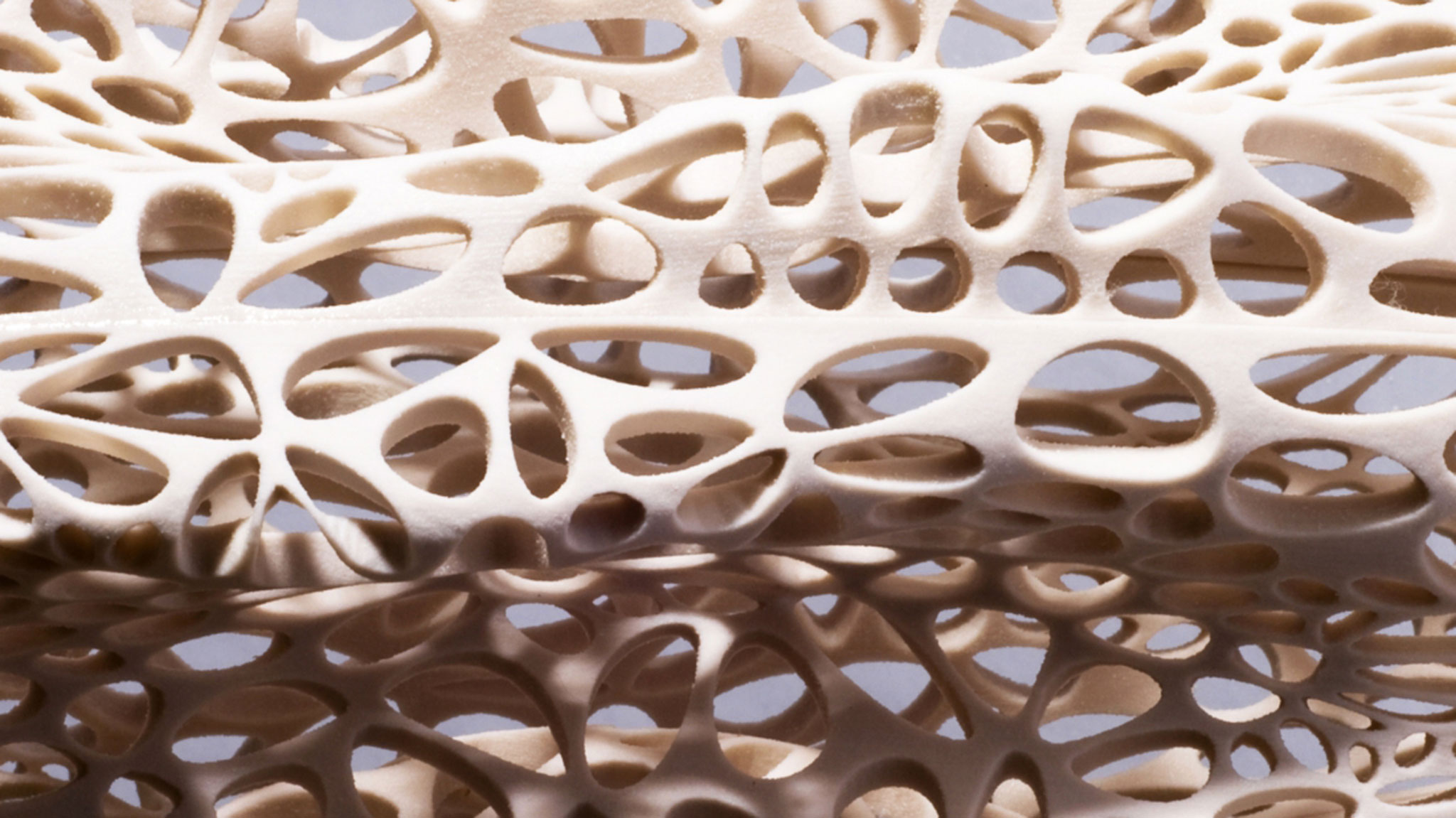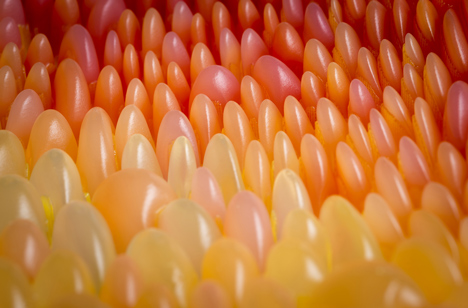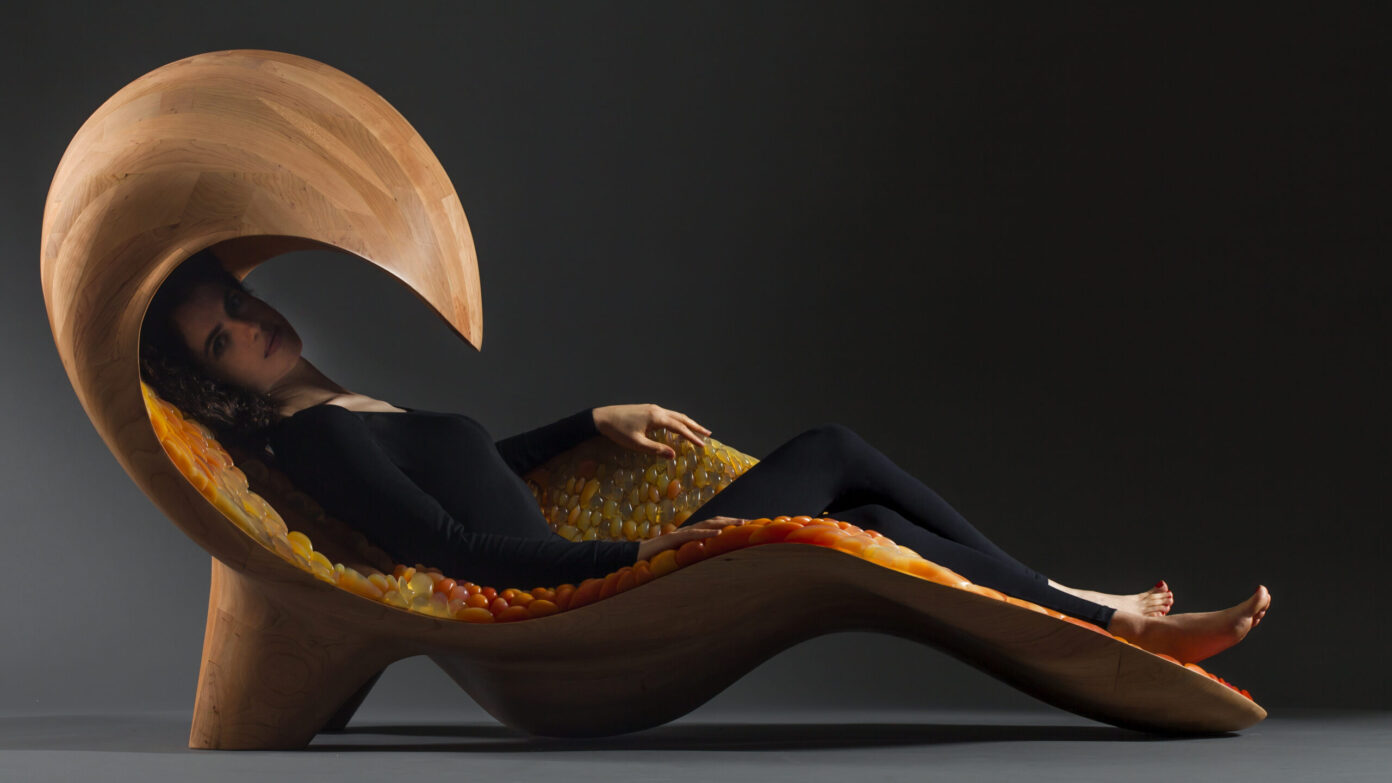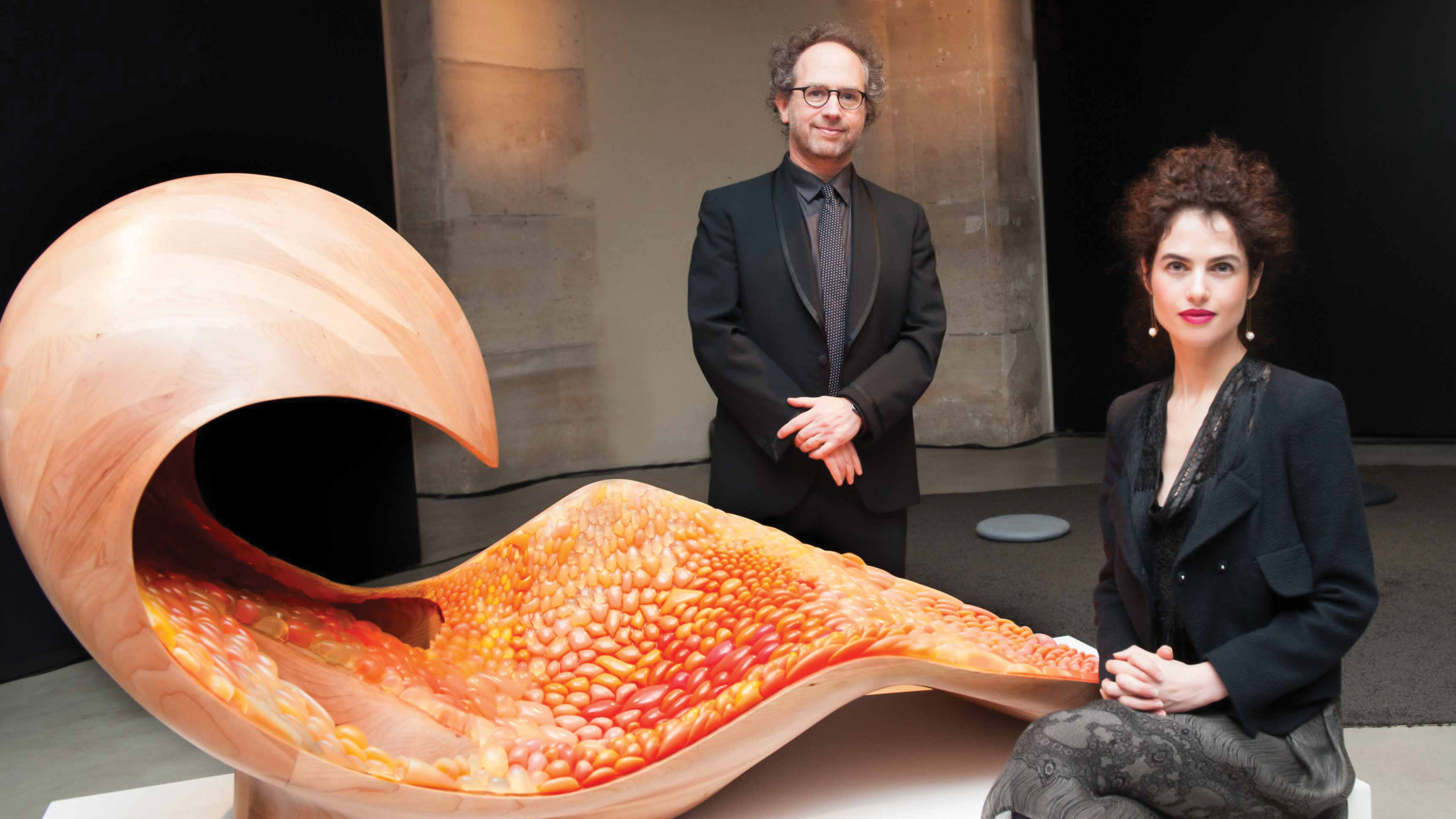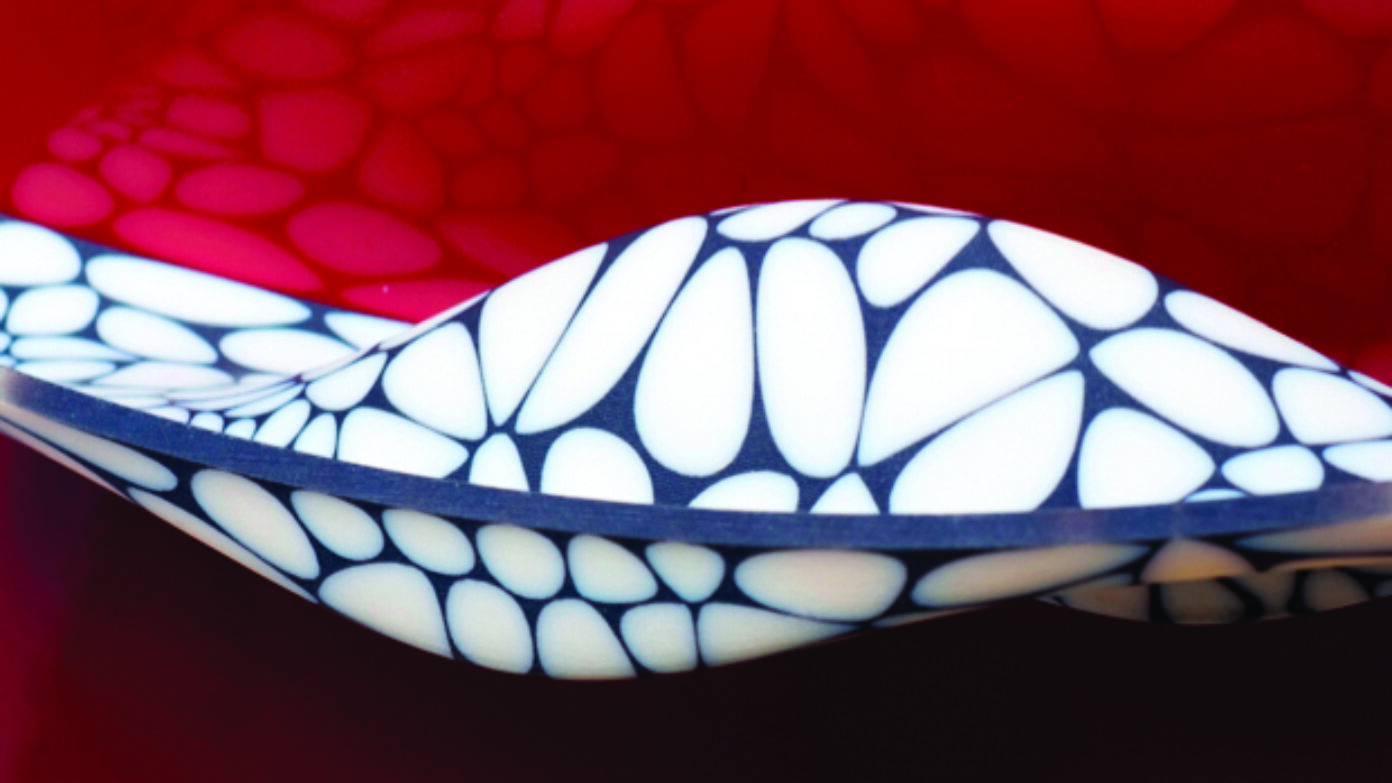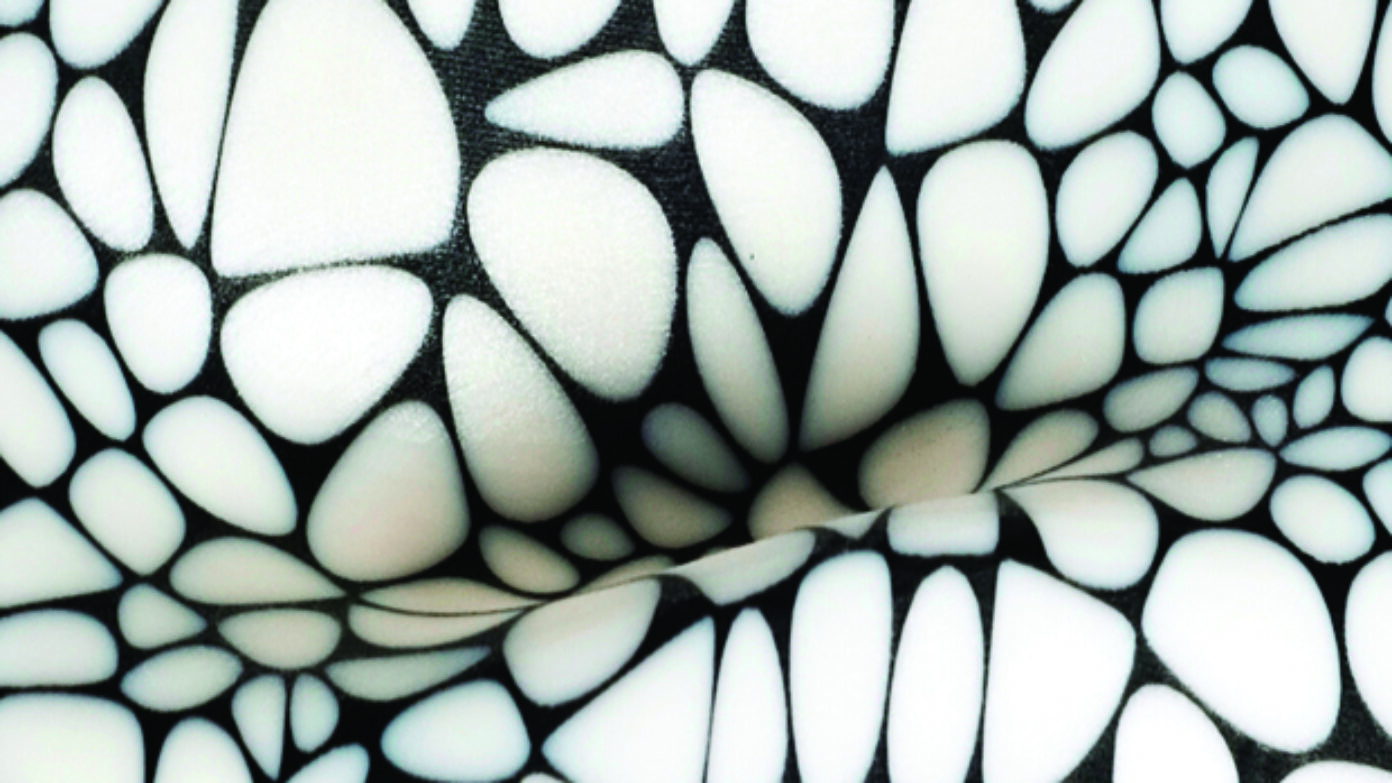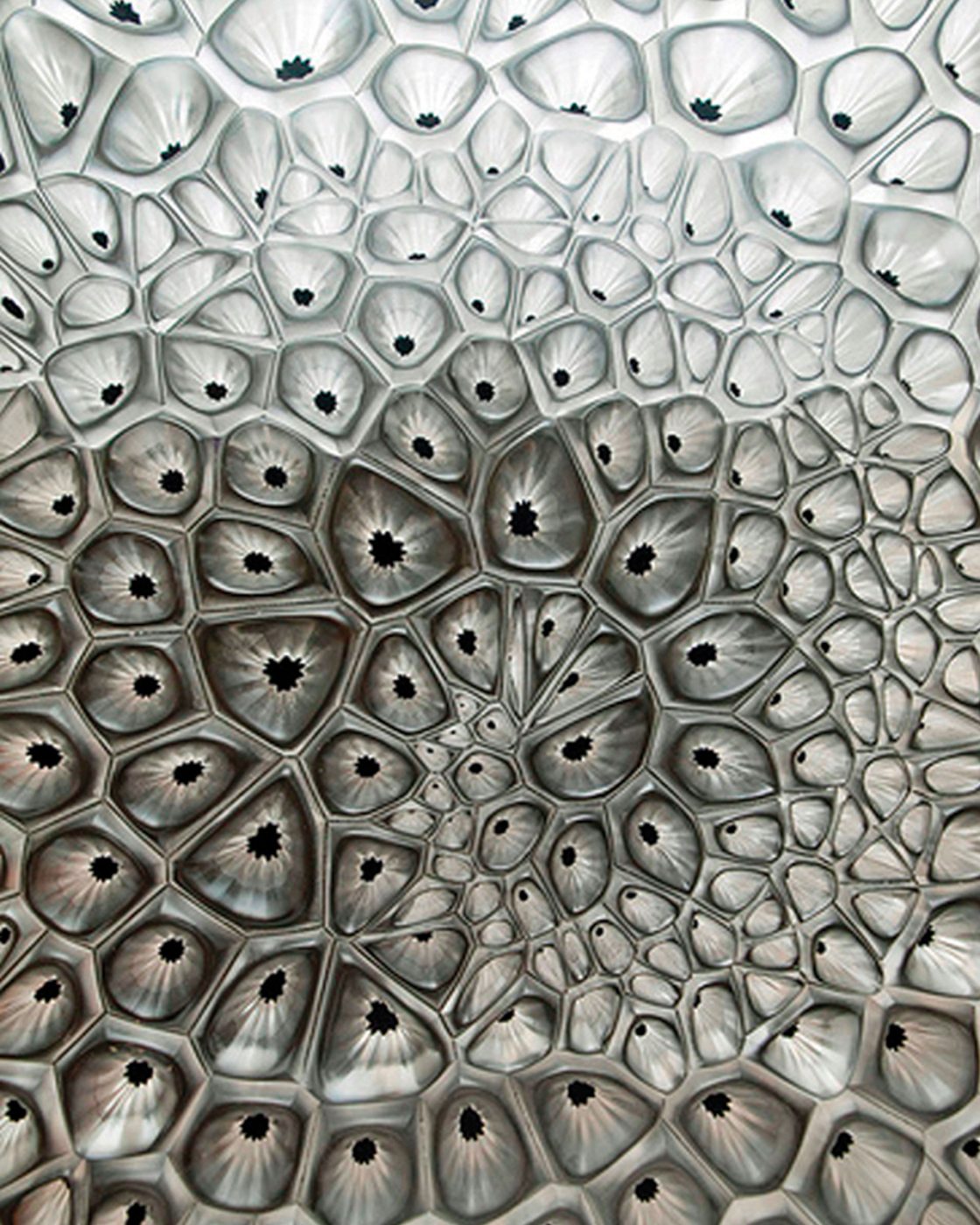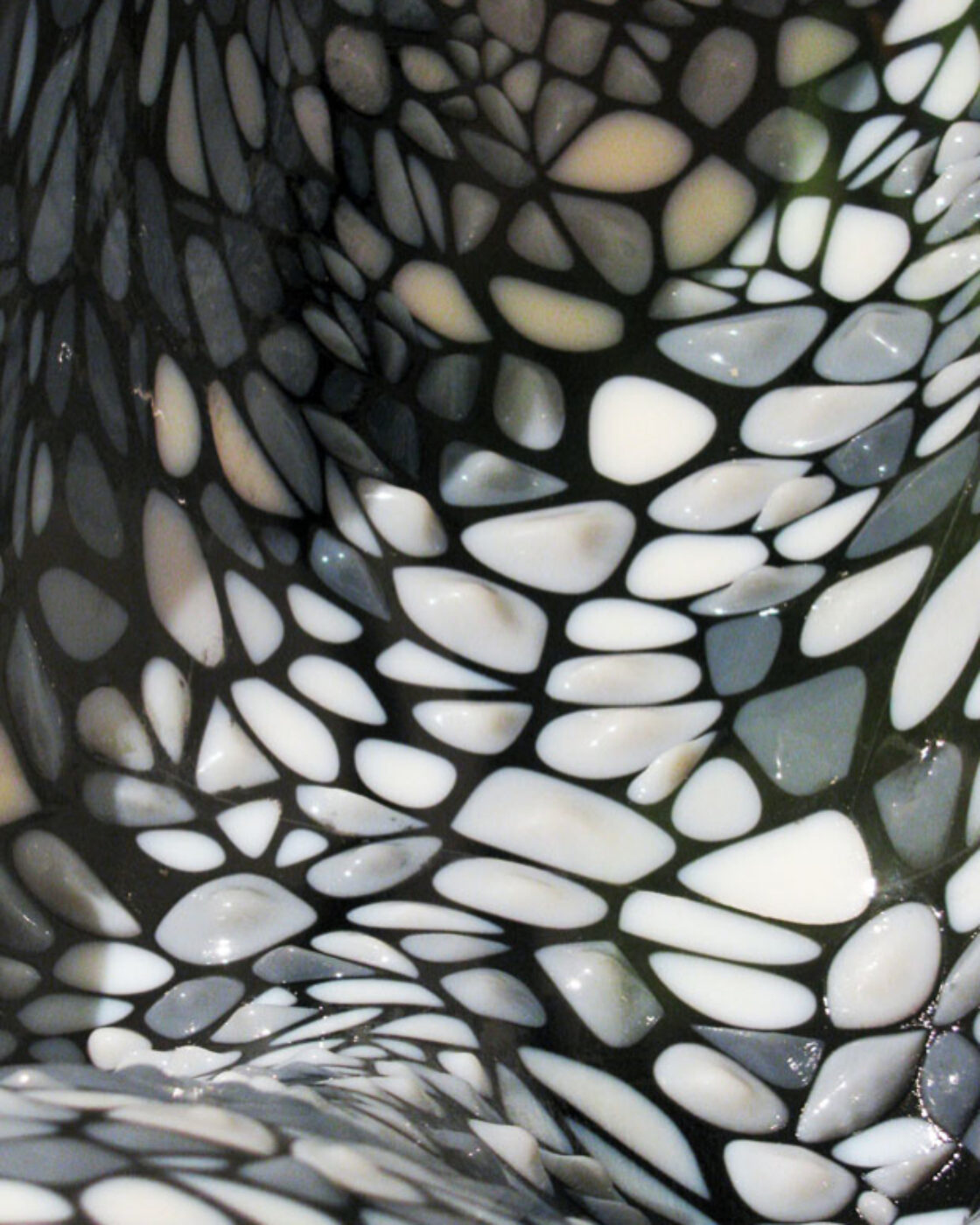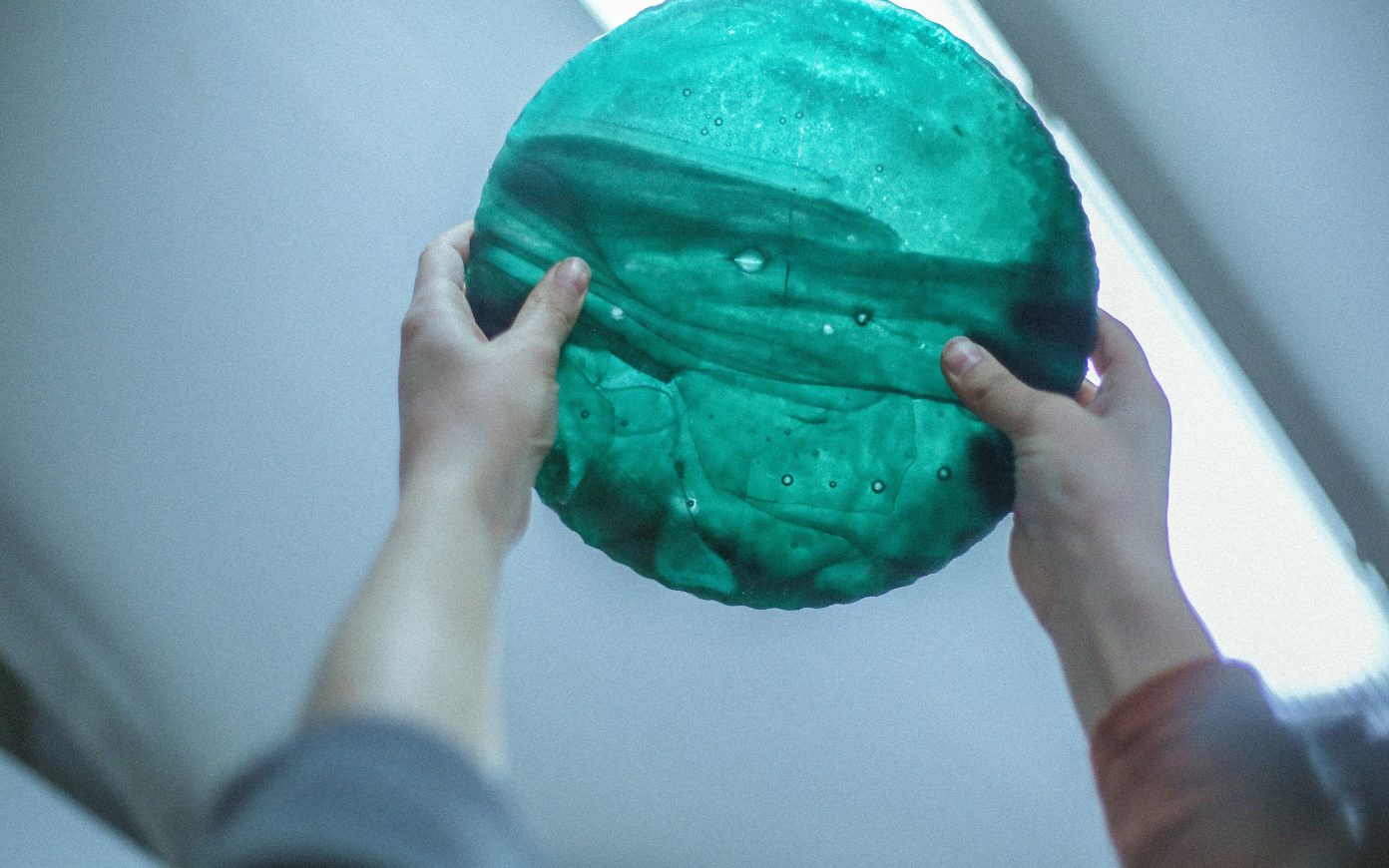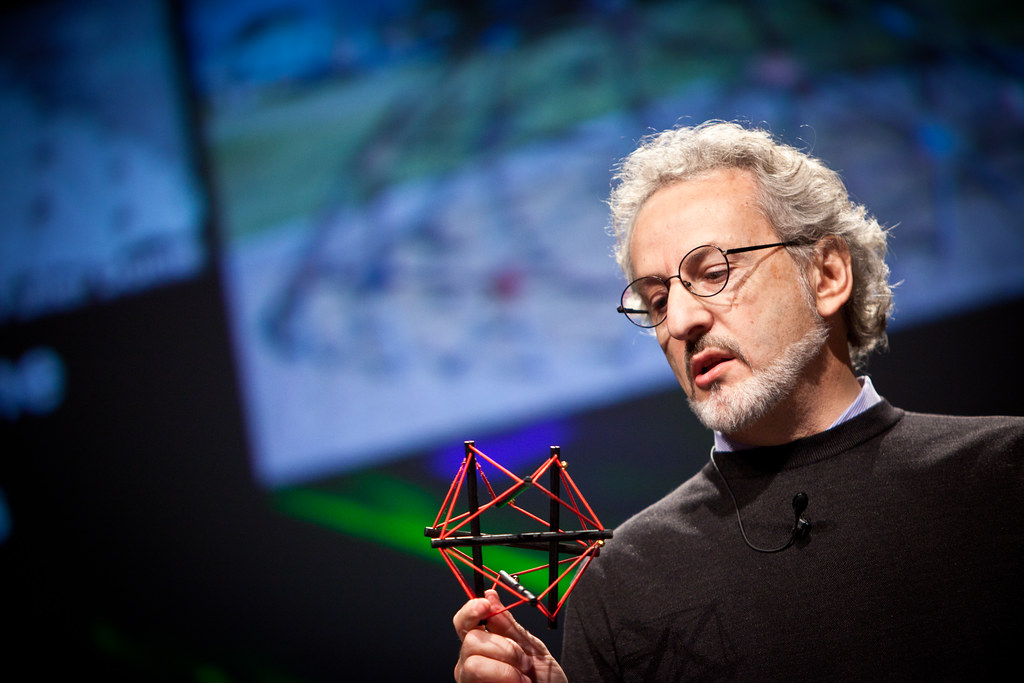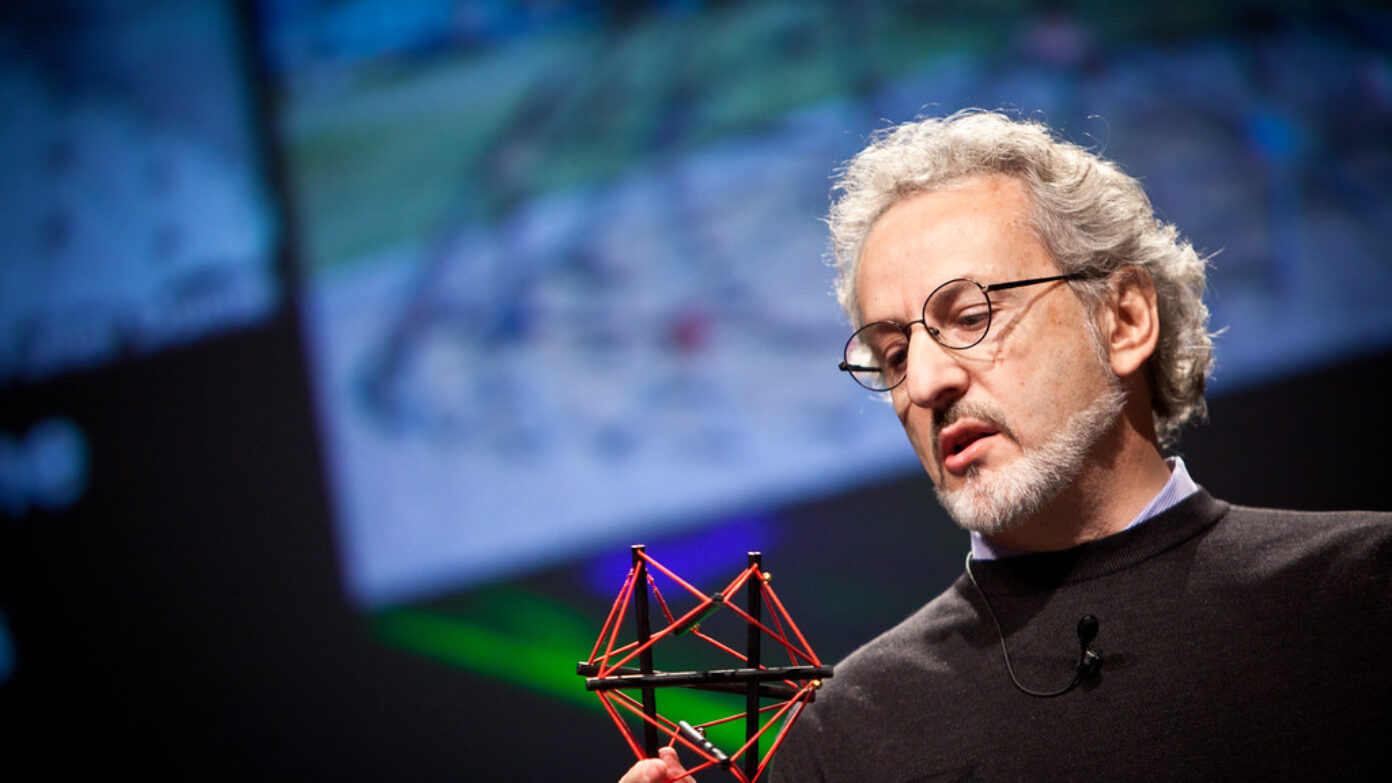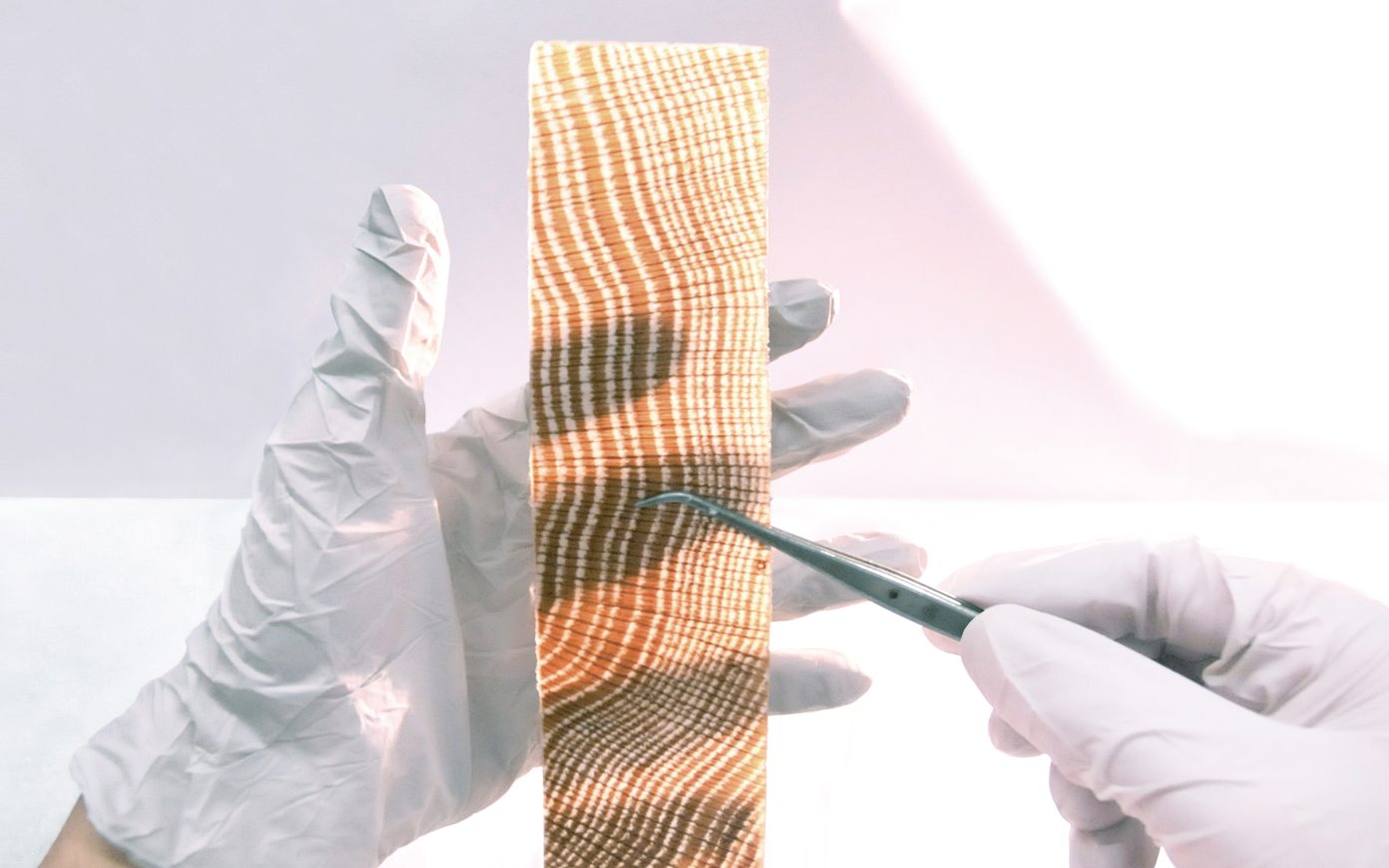Stream: The Gemini acoustic chaise and the Vocal Vibrations project pay close attention to the body, including its biological and medical dimension. To what extent is this emblematic of your work? How do you articulate technology (computation and numeric fabrication) and biology in your creative work? Is it a statement of influence, inspiration, and/or a form of implementation?
Neri Oxman: I consider biology itself a form of technology. It is a “wet technology” that deploys a series of chemical reactions to generate energy and enable complex life functions. Only, instead of the digital binary logic it uses DNA to encode functionality.
Convergence between object and environment
Inspired by nature, I have envisioned and introduced a new design approach called “material ecology” that aims to establish a deeper, more scientific and precise relationship between the design object and an environment. This approach supports a holistic view of design, promoting the design of products that are characterized by property gradients and multi-functionality. Material ecology considers computation, fabrication, and the material itself as inseparable and harmonized dimensions of design.
My research has introduced a suite of biologically-informed digital fabrication tools, techniques, and technologies culminating in designs that have a profound connection with an environment.
In mathematical terms, my designs involve a domain, a range, and a mapping. The domain is a specific biological, natural, or man-made environment involving fields such as mechanical forces, stress, temperature, or electromagnetism. The designer employs physical models expressed mathematically in the digital realm to mediate or iteratively map between the two distinct physical entities (environment and object) until convergence criteria are achieved. In doing so, the designer invariably encounters a dimensional mismatch between the environment space and the object space. In principle, this mismatch should entail a loss of information when a higher dimensional environment is projected onto a lower dimensional object. This is true unless one can assign more than a single property or function to every point on the object manifold. In this case, a framework emerges that allows all degrees of freedom of the natural phenomenon to be represented by the object. This salient feature presents the opportunity to develop material and fabrication approaches that allow us to introduce property gradients and multi-functionality across scales. Thus, the ideas and principles behind material ecology inspired the need for a framework for innovation in computational form-generation and digital fabrication. To address this need we developed an ensemble of novel digital fabrication approaches that enable high spatial frequency property control and multi-functionality. Specifically, we focused on gradient cellular solids for varying structural density, gradient composites for varying elasticity, gradient fiber composition for varying flexural modulus, and gradient aggregates for varying compressive strength. These approaches have enabled the expression of material ecology across product and architectural design scales.
Stream: The entire Vocal Vibrations project offers the public a sensory experience. Do you think the inclusion of this physical sensory dimension, the idea of offering a true experience, is key in changing the way we design our objects and our spaces?
Neri Oxman: The body’s senses are its gateways to invoking emotions. Engulfing, stimulating the senses has always been at the center of good design. Architecture and design are to me about giving physical form to the human experience and as such they must engage in the synthesis of the senses.
Stream: Gemini focuses a lot of attention on innovative fabrication techniques and materials themselves. Do you have the feeling that we are witnessing a new design concept whose starting point is the study of materials and their properties rather than purely formal questions?
Neri Oxman: I believe that the study of materials—our ability to tailor material properties and even design their interaction with the environment in novel ways—will become a central theme in design as we move from the study of shape to the growing of function in ways that are similar to nature.
New synergies
Stream: You explain that Gemini represents a first change of scale in the use of digital manufacturing technologies, in conjunction with traditional additive techniques. Do you think the evolution of digital fabrication technologies (with the increase of computational power) will soon have an impact on a larger scale, like the building scale, or even change the face of our cities?
Neri Oxman: Absolutely. The scale of digital fabrication is growing rapidly and will soon reach the building scale. Digital technologies have already impacted architecture in profound ways. Still, we are in the midst of an era where the disciplines of engineering construction and architectural design live in separate silos, relating to each other through mutual constraints, subjugation, and at times antagonism. The future of digital fabrication is about a holistic process where design and fabrication are fundamentally synergistic and of equal footing in the facilitation of form.
Stream: This project is a great example of collective and collaborative work with a variety of stakeholders at all levels of process and an interdisciplinary dimension which seems to be one of the hallmarks of MIT. Do you feel at the forefront of a new way of conceiving objects and spaces? Does this evolution, working in such a collaborative way, respond to the major changes that we are experiencing, to the complexity of today’s world?
Neri Oxman: Collaboration gives people with very different perspectives the ability to come together and share the creative process. This diversity enables us to be more attentive to change and to respond to it in productive and rapid ways. It enables a multi-scale, multi-disciplinary lens through which to view the world.
(This article was published in Stream 03 in 2014.)
